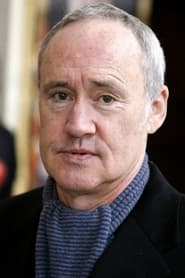
Ask Your Own Question
What is the plot?
What is the ending?
In the ending of the movie "Flood," the city of London faces catastrophic flooding due to a massive storm surge. The main characters, including the determined engineer Sam, work tirelessly to save the city. Ultimately, they manage to avert total disaster, but not without significant sacrifice and loss. The film concludes with a sense of hope as the survivors begin to rebuild.
As the climax of "Flood" unfolds, the storm surge that has been building throughout the film finally strikes London with full force. The city is engulfed in chaos as the floodwaters rise rapidly, overwhelming the defenses that have been put in place.
Scene by scene, the tension escalates. Sam, portrayed as a dedicated engineer, is at the forefront of the crisis. He is seen coordinating efforts with emergency services, his face etched with determination and fear. The camera captures the frantic energy of the city as people scramble to evacuate, their expressions a mix of panic and disbelief. Sam's internal struggle is palpable; he feels the weight of responsibility not only for his family but for the entire city.
As the floodwaters breach the barriers, we see Sam's team working against the clock. They are shown in a series of tense moments, battling the elements and trying to implement emergency measures. The stakes are high, and the emotional toll is evident on their faces. Sam's colleague, who has been a source of support, faces a tragic fate as he sacrifices himself to save others, leaving Sam devastated but more resolute.
In a pivotal moment, Sam's estranged wife, who has been trying to reconnect with him throughout the film, finds herself trapped in a flooded area. Sam's desperation to save her drives him to take risks, showcasing his deep love and commitment. The scene is filled with tension as he navigates through the rising waters, the sound of rushing water drowning out everything else. When he finally reaches her, the relief is palpable, but the danger is far from over.
As the flood reaches its peak, the city's infrastructure begins to fail. The visuals are striking, with streets transformed into rivers, buildings partially submerged, and emergency sirens blaring. The emotional weight of the situation is heavy, as the characters confront their fears and the reality of loss.
In the final moments, Sam and his wife, along with a small group of survivors, manage to reach a safe location. They watch as the city they love is ravaged by the flood, but there is a glimmer of hope in their eyes. The film closes with a montage of the aftermath, showing the community coming together to rebuild. Sam, now more connected with his wife and community, stands as a symbol of resilience.
The fate of the main characters is bittersweet. Sam and his wife survive, their relationship strengthened by the ordeal. However, the loss of Sam's colleague serves as a stark reminder of the sacrifices made during the crisis. The film ends on a note of cautious optimism, emphasizing the themes of survival, community, and the human spirit's ability to endure even in the face of overwhelming adversity.
Is there a post-credit scene?
The movie "Flood," produced in 2007, does not contain a post-credit scene. The film concludes with its final moments, focusing on the aftermath of the catastrophic flooding and the characters' struggles to survive and rebuild. The narrative wraps up without any additional scenes or hints at future developments after the credits roll.
What causes the catastrophic flooding in the movie Flood?
In the movie Flood, the catastrophic flooding is caused by a combination of heavy rainfall and the failure of the Thames Barrier, which is designed to protect London from rising waters. As the rain continues to pour, the river Thames swells beyond its capacity, leading to a disastrous overflow that threatens the city.
How does the character of Mark North respond to the flooding crisis?
Mark North, played by Robert Carlyle, is a dedicated environmentalist and the head of the Thames Barrier project. As the flooding crisis escalates, he becomes increasingly frantic and determined to save London. His internal conflict revolves around his responsibility to protect the city and the pressure he feels from government officials and the public. He works tirelessly to devise a plan to mitigate the disaster, showcasing his leadership and commitment.
What role does the character of Anna play in the story?
Anna, portrayed by Jessalyn Gilsig, is a key character who represents both personal stakes and emotional depth in the narrative. She is Mark North's estranged wife, and their relationship adds a layer of tension to the story. As the flooding unfolds, Anna's character grapples with her feelings for Mark and the urgency of the situation, ultimately becoming involved in the efforts to save their daughter and the city.
What are the consequences of the flooding on the city of London and its inhabitants?
The consequences of the flooding in London are dire and far-reaching. As the waters rise, buildings are submerged, and chaos ensues. The film depicts the panic among the citizens, the struggle for survival, and the breakdown of order. Emergency services are overwhelmed, and the emotional toll on families is palpable, as many are separated and face life-threatening situations.
How does the government respond to the flooding crisis in the film?
The government in Flood is portrayed as initially reactive and somewhat disorganized in its response to the crisis. As the flooding worsens, officials scramble to implement emergency measures, but their efforts are often hindered by bureaucracy and a lack of preparedness. This response highlights the tension between political interests and the urgent need for effective action to protect the citizens of London.
Is this family friendly?
The movie "Flood," produced in 2007, is a disaster thriller that contains several elements that may not be suitable for children or sensitive viewers. Here are some potentially objectionable or upsetting aspects:
-
Natural Disaster Scenes: The film depicts a catastrophic flood, showcasing intense and chaotic scenes of destruction, which may be frightening for younger audiences.
-
Loss of Life: There are moments that involve the loss of life and the impact of the disaster on families and communities, which can be emotionally heavy and distressing.
-
Tension and Panic: The film features scenes of panic and desperation as characters struggle to survive, which may evoke feelings of anxiety or fear.
-
Violence and Danger: There are instances of characters facing life-threatening situations, including drowning and other perilous encounters, which could be unsettling.
-
Emotional Struggles: Characters experience significant emotional turmoil, including grief and fear, which may resonate deeply with sensitive viewers.
Overall, while "Flood" is a gripping narrative, its themes and scenes may not be appropriate for all audiences, particularly children.















































